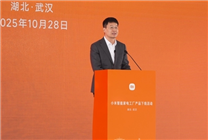Memory and SSD Prices Skyrocket: A Boon for Manufacturers
Summary:
- Recent price increases of 50-100% in memory and SSDs signal a booming market.
- Major cloud service providers are ramping up investments to expand AI-capable infrastructure.
- This unprecedented demand is expected to persist through 2026, benefiting manufacturers significantly.
The Current Landscape of Memory Prices
In recent weeks, the semiconductor market has witnessed alarming price surges in memory and SSDs, with increases ranging from 50% to 100%. This dramatic rise can be attributed to a super bull market that has emerged, marking the strongest surge in memory prices in seven years. As manufacturers capitalize on this trend, the trajectory indicates a sustained upward movement in prices, with expectations of shortages extending until 2026.
Impact on Major Manufacturers
The financial outlook for significant players in the memory chip industry, including Samsung, SK Hynix, and Micron, has never looked better. The current demand is poised to enhance profits substantially, ensuring an impressive performance from downstream manufacturers as well. Industry experts assert that the confluence of declining inventory levels and limited new production capacity will exacerbate the existing shortages.
ADATA’s chairman, Chen Libai, recently noted the escalating investments made by North American cloud service giants such as Amazon, Microsoft, and Google. These companies are increasing their expenditures on cloud infrastructure as they plan to contract memory chip production in the next three years to cater to the rising need for AI computing power.
Supply Chain Constraints
As it stands, original equipment manufacturers (OEMs) are facing dwindling inventories, with previous production capacities sold out not just for the next year but into 2026 as well. This scarcity is pushing prices higher for both memory and flash storage solutions, while even HDD mechanical hard drives are witnessing rapid price increases in this unprecedented market scenario.
Libai emphasizes that, "Regardless of how much customers are willing to purchase, there simply isn’t enough supply." This sentiment highlights the urgency of the situation, as factories are running at full capacity and operating overtime. Such measures are taken to bridge the supply gap for key customers, but it appears that the constraints in memory and flash storage supply could persist throughout next year.
Financial Performance of Key Players
ADATA reported a remarkable performance in its recent financial disclosures, revealing a 30% year-on-year increase in consolidated revenue for the third quarter, amounting to NT$4.463 billion. The revenue for the first ten months reached NT$41.635 billion, noting a 23.7% increase compared to the previous year. This impressive surge indicates that ADATA has surpassed its revenue figures from the entirety of last year, showcasing the robust demand for memory solutions in today’s technology landscape.
Future Outlook
The rapid escalation of memory and SSD prices is set to create a robust opportunity for manufacturers amid rising consumer demand and ongoing supply constraints. As AI technologies continue to gain traction, the need for substantial memory capabilities will only enhance, presenting both challenges and avenues for growth within the sector.
Manufacturers are strategizing to meet this demand, focusing on sustainability and efficiency to maximize output without compromising quality. As the industry witnesses a remarkable pivot towards cloud and AI-related applications, those who can adapt their production processes and supply chain logistics will undoubtedly be at the forefront of this semiconductor boom.
In conclusion, the memory and SSD market is currently navigating uncharted waters characterized by significant price increases and growing demand from various technological sectors. As industry players prepare for the challenges ahead, the foundations are being laid for a transformative period that promises substantial rewards for manufacturers and stakeholders alike.
By staying ahead of these trends, businesses and consumers can better position themselves in this dynamic landscape, ensuring adaptability and responsiveness to market fluctuations over the coming years.







